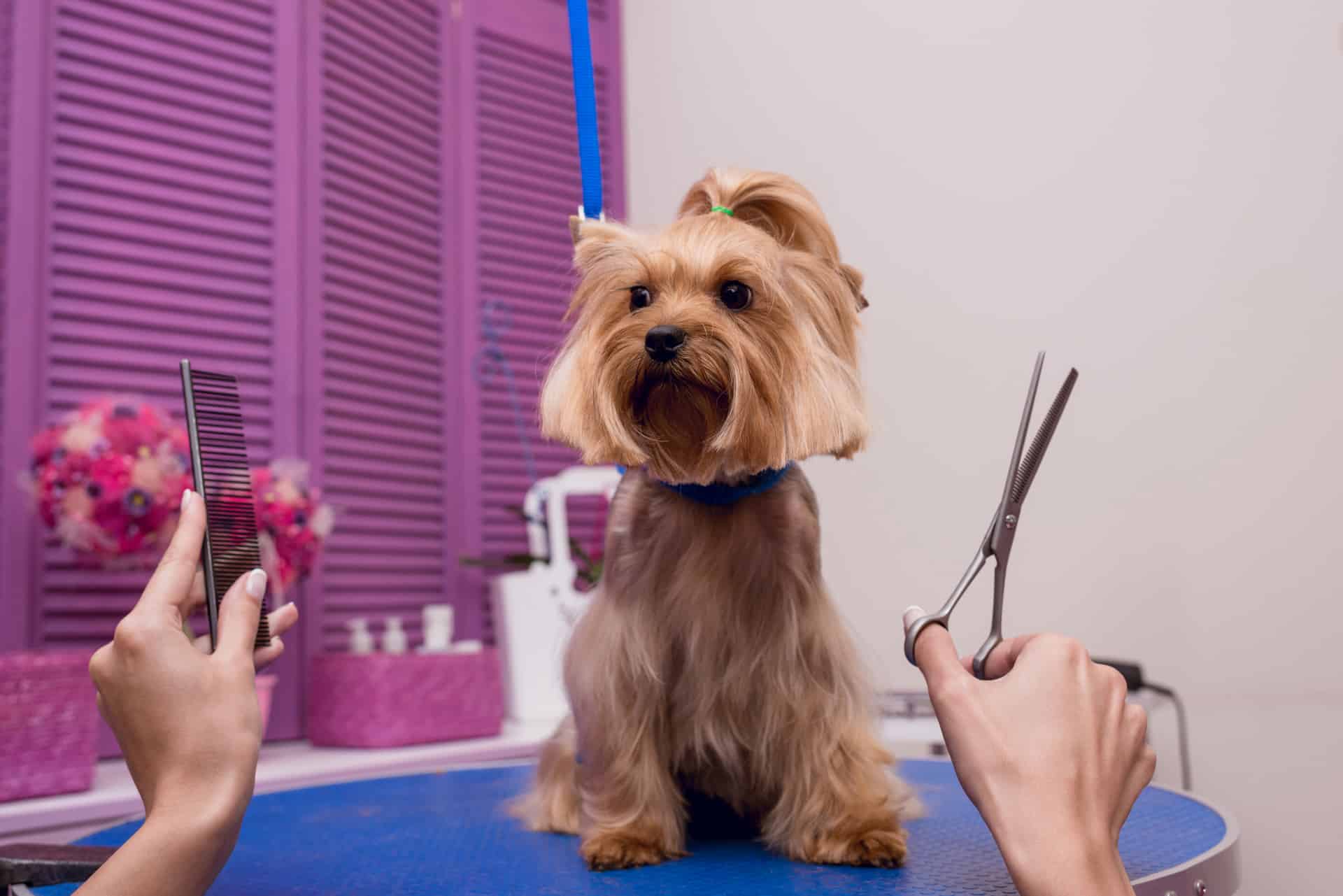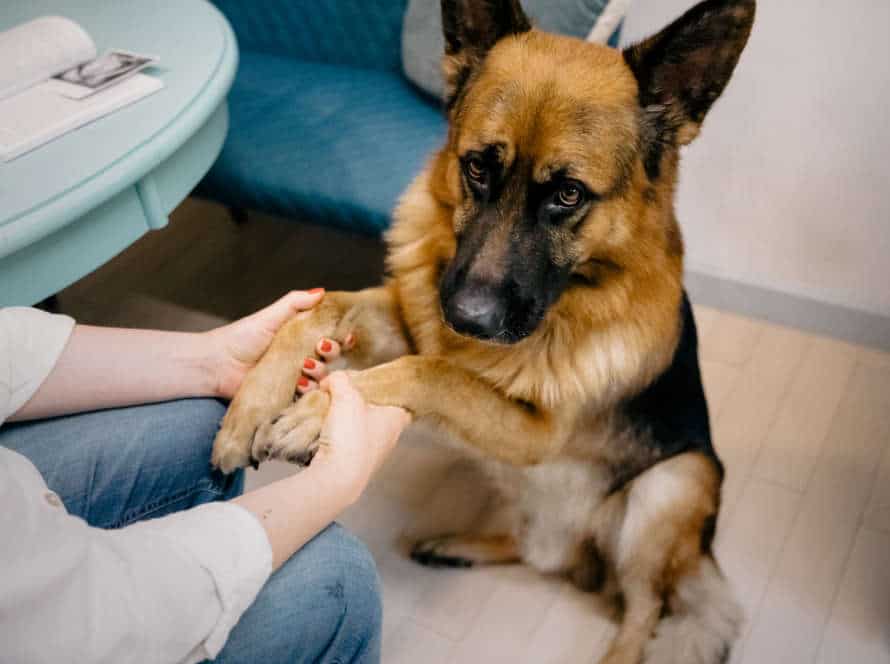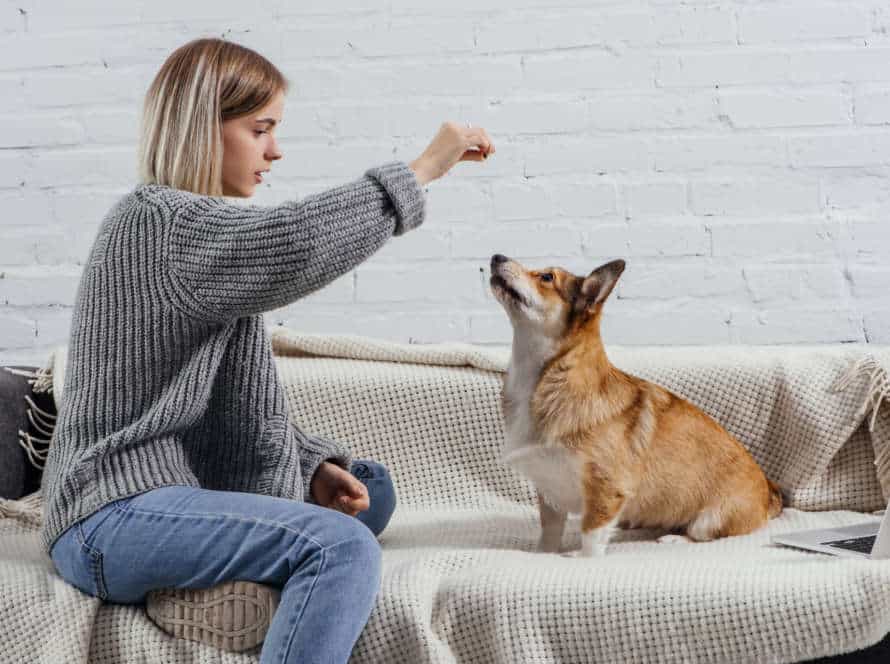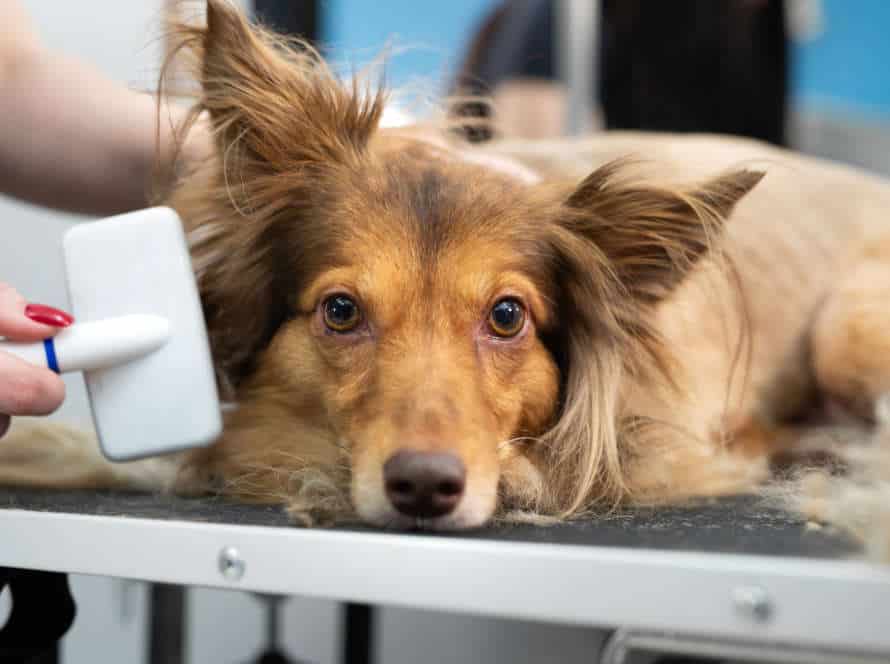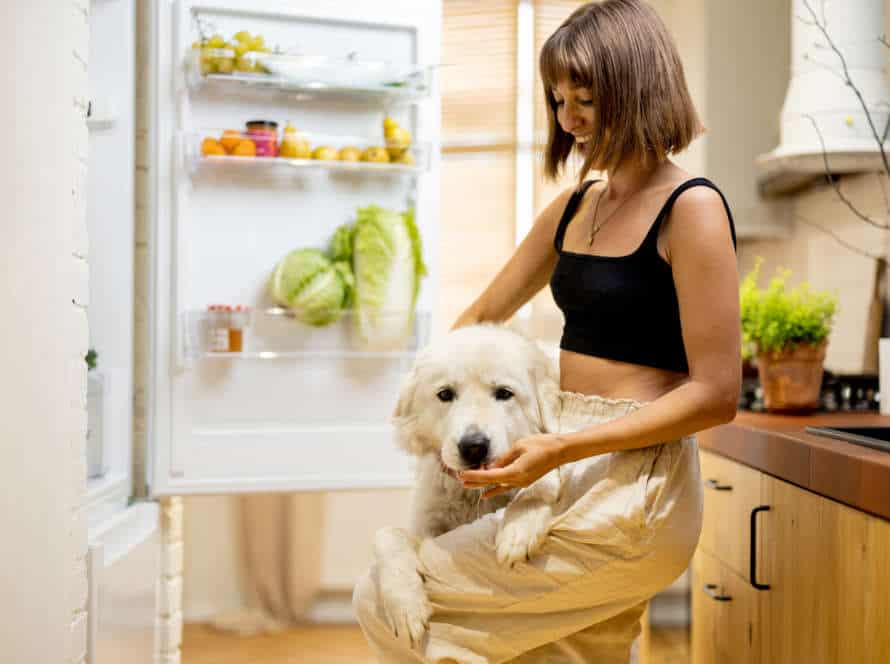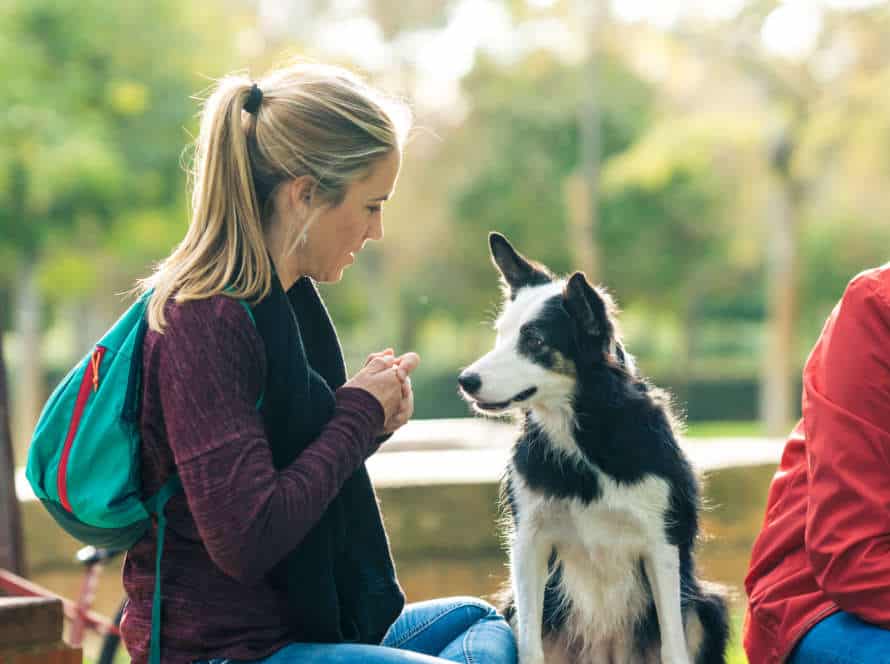The Best Grooming Tools and Techniques for Your Dog
Grooming your furry friend is important for their health and happiness. But with so many tools and techniques available, it can be overwhelming. Here are the best ones to make sure your pup looks and feels its best.
Deshedding tools remove loose fur and undercoat, reducing shedding and allergies.
Nail clippers or grinders help keep nails trimmed for comfort and health.
Dog shampoo helps keep skin healthy and fur smelling fresh.
Regular brushing distributes natural oils and detangles fur. It’s a great bonding experience too.
Clean ears prevent infections. Use a soft cloth, cotton balls or ear-cleaning solutions.
Grooming can be a fun bonding experience for you and your pup. Choose the tools and techniques that work for both of you.
Top 5 Dog Grooming Tools
Grooming your pet can be tough. But the proper tools and techniques make it easier! Beginner or experienced groomer – you need the correct set of grooming tools. Here, we’ll explain the top 5 dog grooming tools and how they can help make the grooming process simpler.
Slicker Brush
A slicker brush is a must-have for any dog owner’s grooming needs. It’s great for removing mats, tangles, fur, and dirt from your pup’s coat. Here are some tips for using it well:
- Start at your pup’s head and brush downwards, following their fur’s growth.
- Apply gentle yet firm pressure; be careful not to scratch their skin with the bristles.
- Pay extra attention to places that easily tangle, such as behind the ears, under the legs, and around the tail.
- Clean the brush after use – remove any fur or debris caught in the bristles.
Pro Tip: Give your pup treats and praise during and after grooming to make it a pleasant experience.
Pin Brush
A pin brush is essential for dog grooming! It can make your pup’s coat healthy and shiny. Why? It has flexible metal bristles with rounded tips. These help remove tangles, mats, and fur. Plus, they won’t injure your dog’s skin. Pin brushes are suitable for all breeds and coat types.
To use one, brush against the direction of growth first. This will loosen mats and tangles. Then, brush in the direction of growth to get rid of remaining debris and improve blood flow. Regular brushing will also spread natural oils, making your pup’s coat more shiny.
Remember to be gentle when brushing sensitive areas. Reward with treats or praise for a positive experience.
De-shedding Tool
De-shedding tools are a must for pet owners who want to keep their furry friends healthy & clean. They are designed to take away loose fur from your pup’s coat, reducing shedding and allergies. Here are some of the best de-shedding tools:
- Furminator: Removes undercoat fur without harming the topcoat.
- SleekEZ: Unique metal blade gets rid of fur, dirt, & dander.
- ShedMonster: Perfect for long & thick coats. Gets rid of mats & tangles.
- Chirpy Pets: Self-cleaning with auto fur release when button is pressed.
- Hertzko: Gentle on skin & removes fur without hassle.
Using a de-shedding tool is a great way to keep your pup’s coat healthy & shiny!
Nail Clippers
Nail clippers are must-have grooming items for your pup’s paw health and comfort. Here’s how to use them best:
- Pick the right kind for your dog’s size and nail thickness; guillotine, scissor or grinder.
- Cut the nails from underneath and avoid the quick.
- If you cut it by mistake, use styptic powder or cornstarch to stop the bleeding.
- Reward your dog with treats and praise during and post-clipping to make it a pleasant experience.
- Regular trimming with clippers can avoid painful overgrowth, snagging and improve your pup’s comfort and mobility.
Ear Cleaner
An ear cleaner is a must-have item in your pup’s grooming kit. It helps protect their ears from infection and keep them healthy. Here’s how to use it:
- Check the ears for dirt, wax, or signs of infection.
- Shake the ear cleaner bottle and put a few drops in your pup’s ear. Avoid the ear canal.
- Massage the base of the ear for 15-30 seconds.
- Wipe away the excess ear cleaner and dirt with a cotton ball or pad.
- Do the same for the other ear.
Pro tip: Use an alcohol-free cleaner and don’t use Q-tips or cotton swabs – these can harm the ear canal and eardrum.
The Importance of Choosing the Right Grooming Techniques for Your Dog
Grooming your pup? Make it regular! It’s vital for their health and joy. To keep their fur and skin fit, you gotta pick the proper tools and methods. Here’s a guide to the different grooming equipment and techniques – and how to choose the most suitable ones for your furry friend.
Understanding Your Dog’s Coat Type
Comprehending your pup’s coat type is vital for their general health and well-being. Different pup breeds possess unique coat types which necessitate special grooming techniques and tools. This will not only upgrade their look but also keep them content and healthy.
There are three main coat types:
- Short-haired coats: These coats are low-maintenance and shed less. They just need intermittent brushing, bathing, and nail trimming.
- Medium-haired coats: These coats require more maintenance and require frequent brushing to stop tangling and matting.
- Long-haired coats: These coats need the most maintenance, with daily brushing to stop matting and tangling.
The correct grooming techniques and tools for your pup will be based on their coat type. Consult with an expert groomer or vet to decide the best practices for your pup. Grooming your pup frequently will not just aid them keep up hygiene but also fortify your relationship with them.
Pro tip: Use positive reinforcement techniques such as rewards and commendation when grooming your pup to make it a pleasant experience for them.
Choosing the Right Shampoo and Conditioner for Your Dog
Choosing the right shampoo and conditioner is key for your pup’s health and looks. Different fur types need different shampoos and conditioners. Here’s what to think about when picking one:
- Fur type: Get one that fits your pup’s fur type – curly, long, short, thick or thin.
- Skin type: Allergies, dryness, sensitivities – all these affect your choice. Hypoallergenic and gentle if pup has sensitive skin.
- Age: Puppies require mild formula for their delicate skin.
- Pro Tip: If pup has an odor problem or skin infections, talk to a vet. They may recommend medicated shampoo.
Bathing Techniques for Your Dog
Bath time can be fun for you and your pup – if you know what to do.
Here are some tips:
- Brush their coat before the bath to get rid of any loose hair.
- Use lukewarm water and pet-safe shampoo – watch out for eyes, ears, and nose.
- Dry them off with a clean towel – and use a hairdryer on low heat.
- For the bathtub, get a non-slip mat and a detachable showerhead.
- Plus pet-friendly shampoo and conditioner.
Follow these tips, and bath time will be stress-free for you both!
Brushing Techniques for Your Dog
Brushing your pup regularly? Great idea! It can help their skin stay healthy, keep their coat soft and shiny, plus assist with bonding. But, it’s important to use the right techniques and tools for brushing. Here are some tips:
- Introduce them to the brush and let them sniff it.
- Gently brush in the direction of fur growth, starting from their head and working down. Use a soft-bristled brush for short-haired dogs and a pin brush for long-haired.
- Be gentle around sensitive areas like their belly, legs, and tail. Use a comb to untangle knots or mats.
- Reward your pooch with treats and lots of praise – make brushing sessions a fun experience!
Grooming Tips for Specific Dog Breeds
Different dog breeds need different grooming techniques and tools. Research your breed to find what works best. It’s important to know the different types of tools and techniques that can be used while grooming. Here, we’ll discuss the best grooming tools and techniques for particular dog breeds.
Short-haired Breeds
Short-haired doggos need regular grooming. Here are tips for a few breeds:
- Beagle: Brushing with bristle brush or grooming mitt helps keep their coat shiny.
- Boxer: Smooth, glossy coat requires minimal grooming. Brushing with a bristle brush or damp cloth keeps their coat clean.
- Dalmatian: Short, dense coat sheds heavily twice a year. Slicker brush or shedding blade can help manage shedding and prevent matting.
- Weimaraner: Sleek, short coat requires minimal grooming. Brush with a bristle brush and bathe as needed to keep the coat healthy and shiny.
Always use best grooming tools and techniques for your pup’s coat type. Establish regular grooming routine which pleases both of you.
Long-haired Breeds
Long-haired breeds need frequent, specific grooming to keep their coats healthy and tangle-free. Here are some tips for certain breeds:
- Shih Tzu: Needs daily brushing with a slicker brush and metal comb.
- Afghan Hound: Needs regular bathing and brushing with a pin brush and wide-tooth comb.
- Poodle: Professional grooming every 4-6 weeks with a slicker brush and metal comb for daily grooming.
- Collie: Needs frequent brushing, starting from the bottom of the coat with a slicker brush and metal comb.
- Maltese: Daily brushing and regular bathing with a pin brush and wide-tooth comb.
Pro tip: Grooming not only keeps your dog looking great, but also helps their health and wellbeing.
Double-coated Breeds
Double-coated dog breeds have two layers of fur: a soft undercoat and a coarse outer coat. To maintain their health and appearance, proper grooming is needed. Here are some tips and tools to help you groom your double-coated dog:
- Brush regularly! A slicker brush is ideal for removing loose fur and detangling the coat.
- Bathe occasionally. About once every 2-3 months. Use a high-quality shampoo designed for double-coated breeds. Be sure to rinse thoroughly.
- Dry correctly. Pat fur dry with a towel. Use a blow dryer on a low heat setting to finish.
- Trim the fur. Around ears, paws, and bottom. This makes grooming easier and keeps your dog clean.
- Trust a professional. If you’re unsure about grooming, consider taking them to a professional groomer for help.
Grooming Do’s and Don’ts
It’s essential to keep your pup’s coat healthy and strong.
To ensure your pup looks great, it’s important to know the proper grooming do’s and don’ts.
Let’s look at the best grooming tools and techniques for taking care of your pup’s coat and skin.
Do’s
Grooming your pup is super important for their health. Here’s a few must-do’s:
- Brush their fur every day to stop mats and knots and spread out their oils.
- Cut their nails often to avoid pain, overgrowth, and discomfort.
- Clean their ears to stop ear infections and wax build-up.
- Give them baths often with the right temperature and shampoo.
- Use tools made for dogs, like a slicker brush, de-shedding tool, and nail clippers.
Grooming shouldn’t be a negative experience. Spend time creating a calm and enjoyable routine with your pup.
Pro tip: Reward them with a treat after to make grooming a positive experience!
Keep Your Dog Calm and Relaxed during Grooming
Grooming your pup can be a bit stressful – for you and them! But to make the process easier, it’s essential to keep them calm and relaxed. Here are some tips to help:
- Use treats or praise as positive reinforcement.
- Start in a quiet, familiar setting to make them feel secure.
- Choose grooming tools suitable for their breed and coat type.
- Avoid sudden or loud noises that could startle them and create a negative association with grooming.
- Take breaks to let them stretch and relax, especially if they seem fidgety.
These tips will make grooming a great experience for your dog and keep them looking and feeling their best.
Reward Your Dog after Grooming
Rewarding your pup after grooming is key. Here are some tips!
- Choose treats, toys, or cuddles your dog will love.
- Reward them right after the session so they make the connection with good behavior.
- Be consistent to make grooming something they look forward to.
- Incorporate grooming into your daily routine so they get used to it.
Don’ts
Essential for your pup’s wellbeing is regular grooming, but there are a few “don’ts” to bear in mind. Here are the top ones:
- Don’t use scissors to cut out mats or tangles in your dog’s fur. It might hurt your pet. Use a comb or dematting tool instead.
- Don’t cut your pup’s nails too short. This may cause pain and bleeding. Use dog nail clippers and cut only a tiny bit at a time. Stop when you see the pink part (the quick).
- Don’t bathe your pup too often. It can dry out their skin and coat. Once every 4-6 weeks is enough, or when they become smelly or dirty.
- Don’t miss regular grooming tasks like brushing, ear cleaning, and teeth brushing. This can cause health problems. Create a routine and adhere to it, to keep your pup happy, healthy, and comfy.
Don’t Use Scissors to Cut Matted Hair
Using scissors to cut matted hair on your pet is a major “don’t“! This is because it can easily cause injury. Scissors are sharp and can cut through skin if your dog moves too much. It’s best to use a different tool. For example, a mat splitter or dematting comb. A mat splitter has a curved blade to cut through tough mats. A dematting comb has sharp teeth to safely cut through mats. It also helps spread natural oils throughout your dog’s coat. Always get advice from a vet or professional groomer for the best grooming tools and techniques for your pet’s breed.
Don’t Overdo Brushing or Bathing your Dog
Grooming your pup is important for their health. But don’t brush or bath too much! Overbrushing can lead to skin and hair damage, so stick to a few gentle brushings each week. Overbathing can cause skin irritation and dry out their fur, so only bathe once a month or as necessary. And use a shampoo meant only for dogs.
Every dog is different, so it’s best to talk to your vet or groomer for advice.
Don’t Forget to Check Your Dog’s Ears and Nails
When it comes to grooming your pup, never forget to check their ears and nails! Neglecting these areas could cause health issues. Here’s what to keep in mind:
- Ears: Check for redness, swelling, or discharge. Clean with a quality cleaner and soft cloth/cotton ball. Don’t use cotton swabs as they could push debris and cause damage or infection.
- Nails: Trim regularly with clippers or a rotary tool. Overgrown nails can hurt, injure, or hinder mobility. Clip only the translucent part, avoiding the pink part – it has blood vessels and nerves!
- Pro tip: Give treats or positive reinforcement to make grooming a pleasant experience.
Frequently Asked Questions
1. What grooming tools should I use for my dog?
The best grooming tools for your dog depend on their breed, coat type, and grooming needs. Some essential tools include a slicker brush, comb, nail clippers, and a shampoo specifically formulated for dogs.
2. How often should I groom my dog?
The frequency of grooming for your dog depends on their breed and coat type, but in general, dogs should be groomed at least once a month. Dogs with longer hair or thicker coats may require more frequent grooming to prevent matting and tangles.
3. Can I use human shampoo on my dog?
No, you should not use human shampoo on your dog. Human shampoos are formulated for pH levels that are different from a dog’s, and they can be drying and irritating to their skin. Use a shampoo specifically formulated for dogs.
4. How do I know if I’m trimming my dog’s nails correctly?
You should only trim the very tip of your dog’s nails, avoiding the quick, which is the blood vessel and nerve ending in the nail. If you accidentally cut the quick, it may bleed and cause pain. If you’re unsure or uncomfortable trimming your dog’s nails, seek help from a professional groomer or veterinarian.
5. How do I brush my dog’s teeth?
You can brush your dog’s teeth with a soft-bristled toothbrush and toothpaste specifically formulated for dogs. Start by introducing the toothbrush and toothpaste gradually, allowing your dog to sniff and taste it. When you’re ready to start brushing, hold the brush at a 45-degree angle to the teeth and brush in circular motions.
6. Do I need to take my dog to a professional groomer?
It depends on your dog’s specific grooming needs and your own level of comfort with grooming. Some dogs with long, thick coats require professional grooming every few months to prevent matting and tangles. If you’re unsure or uncomfortable with any aspect of grooming your dog, seek help from a professional groomer or veterinarian.

